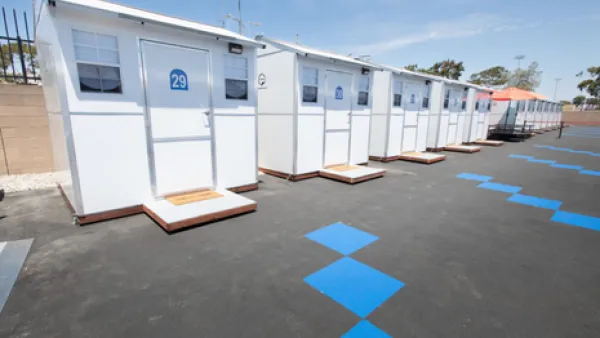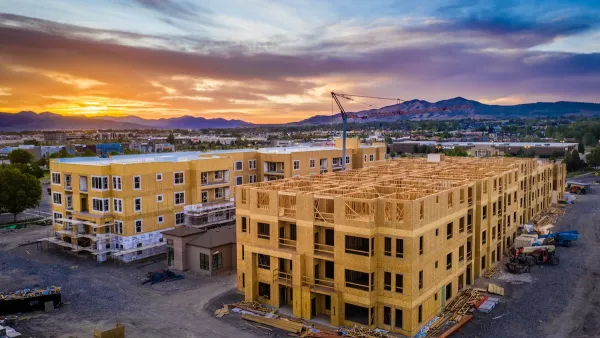Few in Los Angeles have the opinion that the lack of housing supply is driving the homeless crisis in the city and around the state.

The Los Angeles Times surveyed Californians about what they thought was driving the state’s homeless crisis, and many who work on the issue were surprised by the results. "Only 13 percent of respondents blamed the crisis on 'too little homebuilding.' Twice as many people included 'lack of funding for affordable housing' or 'lack of rent control' as top explanations for the problem," Rick Jacobus writes for Shelterforce. This seems counter to the basic principles of economics. 'Both in the comments section on the LA Times website and on Twitter, commenters wondered what it was about supply and demand that voters can’t quite understand,' Jacobus writes.
Jacobus argues that, while increased supply should be part of the strategy, the story is more complicated than that. Jacobus contends that housing is composed of many distinct commodities and changing the supply of luxury apartments is unlikely to impact costs for some people on the lower end of the market. He goes even further, writing: "My view is that there are sensitive neighborhoods where fancy new buildings can accelerate gentrification, but there are also many more neighborhoods where that is not much of a risk."
To make a dent in housing costs Jacobus argues: "The most compelling policy implication of this switch to a segmented view of housing markets is that we need to do more to encourage development of new buildings that are targeted for lower- and middle-income households." In Jacobus’ view, voters don’t believe that developers and the free market will solve the housing crisis, so to make a more compelling case for development, politicians must be willing to hold private partners to their promises when it comes to building affordable housing and must be honest about the challenges presented by working with these partners.
FULL STORY: Why Voters Haven’t Been Buying the Case for Building

National Parks Layoffs Will Cause Communities to Lose Billions
Thousands of essential park workers were laid off this week, just before the busy spring break season.

Retro-silient?: America’s First “Eco-burb,” The Woodlands Turns 50
A master-planned community north of Houston offers lessons on green infrastructure and resilient design, but falls short of its founder’s lofty affordability and walkability goals.

Delivering for America Plan Will Downgrade Mail Service in at Least 49.5 Percent of Zip Codes
Republican and Democrat lawmakers criticize the plan for its disproportionate negative impact on rural communities.

Test News Post 1
This is a summary

Test News Headline 46
Test for the image on the front page.

Balancing Bombs and Butterflies: How the National Guard Protects a Rare Species
The National Guard at Fort Indiantown Gap uses GIS technology and land management strategies to balance military training with conservation efforts, ensuring the survival of the rare eastern regal fritillary butterfly.
Urban Design for Planners 1: Software Tools
This six-course series explores essential urban design concepts using open source software and equips planners with the tools they need to participate fully in the urban design process.
Planning for Universal Design
Learn the tools for implementing Universal Design in planning regulations.
EMC Planning Group, Inc.
Planetizen
Planetizen
Mpact (formerly Rail~Volution)
Great Falls Development Authority, Inc.
HUDs Office of Policy Development and Research
NYU Wagner Graduate School of Public Service





























